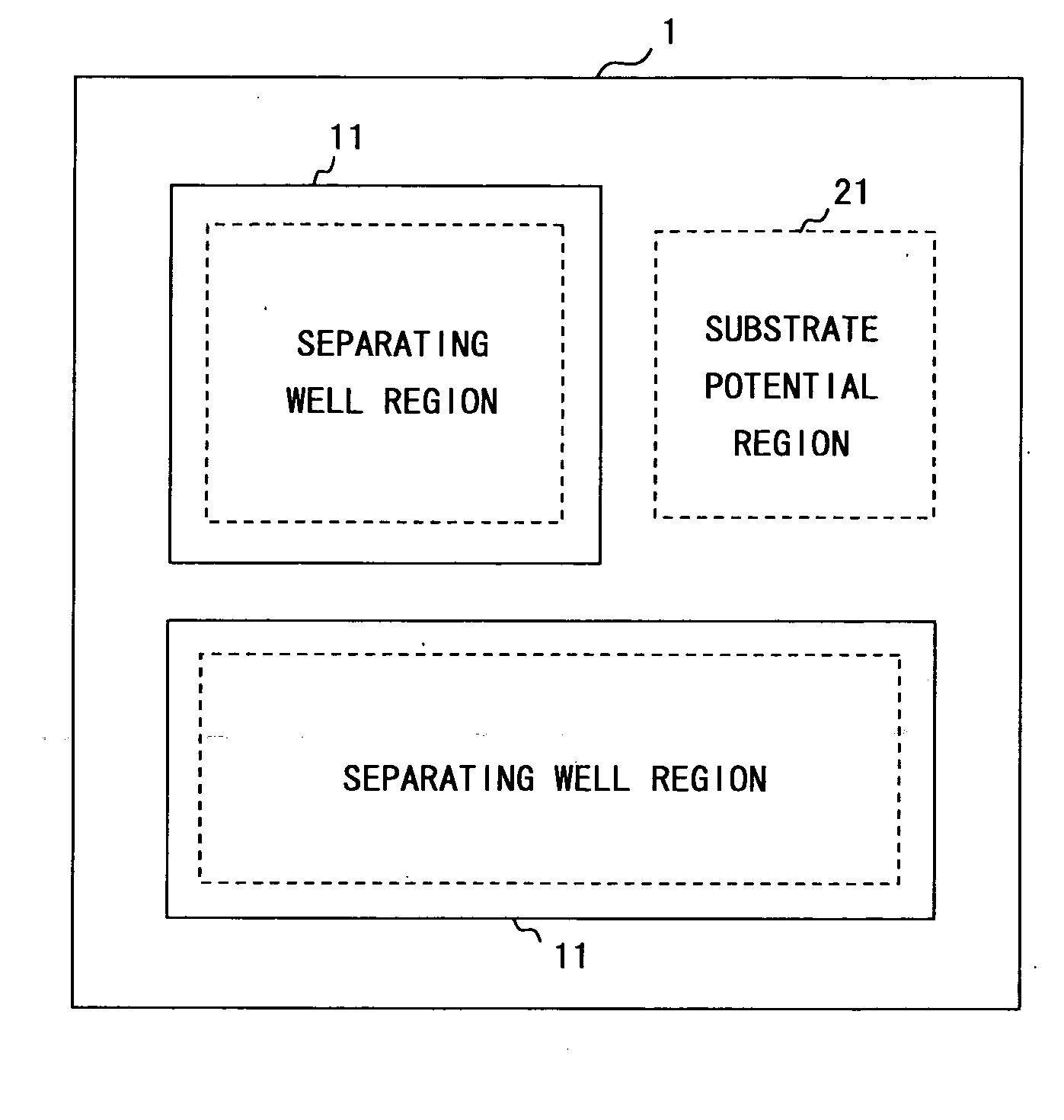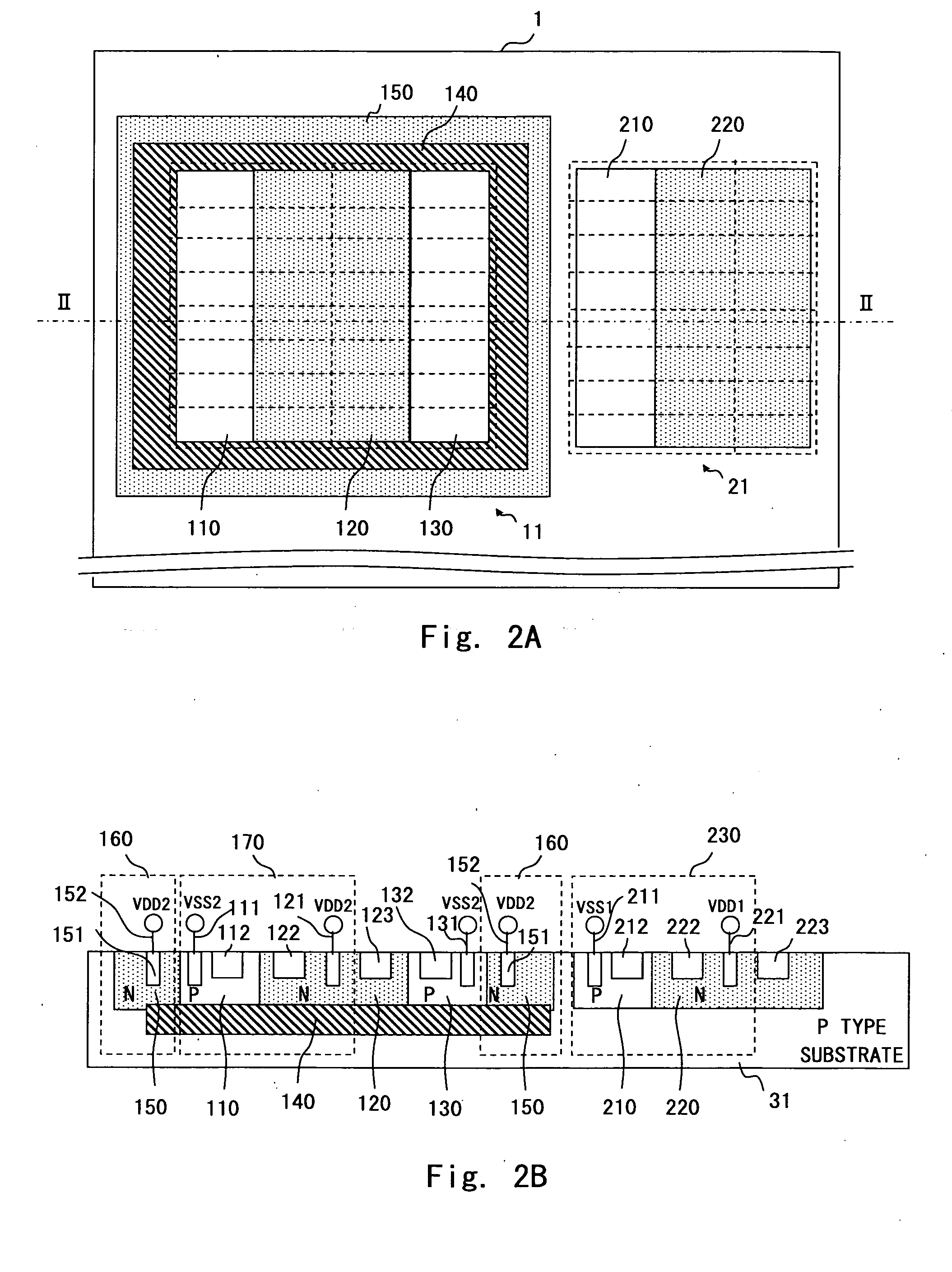Layout design method and layout design tool
a layout design and integrated circuit technology, applied in the direction of cad circuit design, computer aided design, transistors, etc., can solve the problems of increasing processes and design time, and difficulty in reducing power consumption of semiconductor integrated circuits. the effect of reducing layout design time and improving design quality
- Summary
- Abstract
- Description
- Claims
- Application Information
AI Technical Summary
Benefits of technology
Problems solved by technology
Method used
Image
Examples
first embodiment
[0031] A preferred embodiment of the present invention is explained hereinafter in detail. The drawings are simplified as appropriate for clarity. Note that the same components are denoted by the same reference numerals and repetitive description will be omitted.
[0032] A first embodiment of the present invention is described hereinafter with reference to the drawings. FIG. 1 is a plan view showing a simplified layout of a semiconductor integrated circuit according to this embodiment. As shown in FIG. 1, a plurality of regions 11 that separates a substrate potential (hereinafter referred to as a separating well region 11) and a region 21 that does not separate the substrate potential 21 (hereinafter referred to as a substrate potential region 21) are formed in a semiconductor integrated circuit 1.
[0033]FIG. 2A is a schematic plan view showing the separating well region 11 and the substrate potential region 21. FIG. 2B is a cross-sectional diagram taken along the line II-II of FIG. ...
PUM
 Login to View More
Login to View More Abstract
Description
Claims
Application Information
 Login to View More
Login to View More - R&D
- Intellectual Property
- Life Sciences
- Materials
- Tech Scout
- Unparalleled Data Quality
- Higher Quality Content
- 60% Fewer Hallucinations
Browse by: Latest US Patents, China's latest patents, Technical Efficacy Thesaurus, Application Domain, Technology Topic, Popular Technical Reports.
© 2025 PatSnap. All rights reserved.Legal|Privacy policy|Modern Slavery Act Transparency Statement|Sitemap|About US| Contact US: help@patsnap.com



